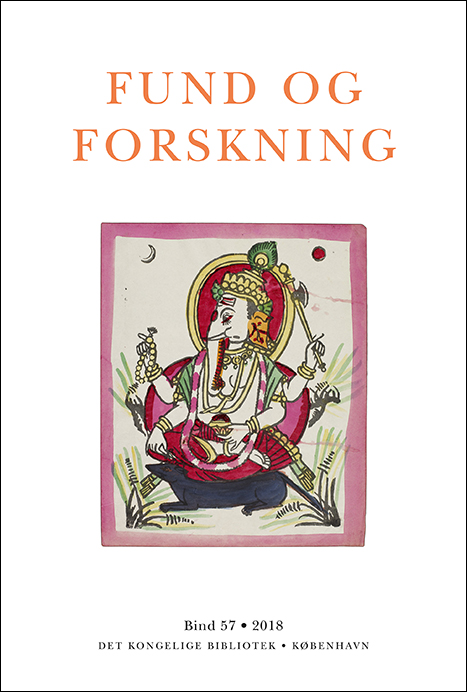Tekst, teknologi og trope. Det tibetanske bedehjul
DOI:
https://doi.org/10.7146/fof.v57i0.118772Resumé
Trine Brox: Text, technology, trope
Tibetan Buddhist practices include the engagement with Buddhist script in the form of tightly packed scrolls of paper that are placed in drums and spun in order to accumulate merit. On the scrolls are written or printed mantras (sacred or magic sounds in the form of a series of syllables) or dhāraṇīs (formula condensing lengthy texts or teachings). The receptacles containing such scrolls are the iconic prayer wheels, whose materiality enables and restricts particular modes of textual engagement. What kind of texts are these scrolls? How does one read texts that come in the form of tightly packed scrolls? They cannot be read by immersing oneself in the content of the text because its materiality restricts access to it. Instead it fits perfectly with the prayer wheel technology that allows circumambulatory recitation, the article argues.
The prayer wheel is not only an important object in recitation practices for Tibetan Buddhists, but has also become a key marker of Tibetan identity. Yet its history, culture and practice have received very little scholarly attention. This article attempts to eradicate this blind spot. It endeavors to show how the prayer wheel has earned itself its iconic status by explaining how the prayer wheel is a receptacle of sacred script and a device for reciting sacred script. The article zooms in on (i) the cult of the book in the Tibetan culture sphere, (ii) the technology of prayer wheels; and (iii) the recurring tropes of the wheel, circumambulation, and rotation in Buddhism, as well as the merit connected with them. In view of this particular constellation of book cult, technology, and dominant trope, it makes sense that, first of all, Tibetan Buddhists have adopted and further developed a technology that optimizes interaction with sacred script; secondly, that rotation is considered an adequate way to interact with Buddha’s doctrine; and third, that this device has become an icon for the Tibetan civilization. It is especially the sacred text within the wheel, the article argues, that endows the prayer wheel with high status in a hierarchy of Buddhist material objects. Finally, this raises questions about modernized prayer wheels – when technological progress has enabled further development of devices that can contain and spin Buddhist script such as optic discs, prayer wheel apps, and automated praying machines. How does their materiality impact textual engagement?
The article is based upon data produced through (i) ethnographic inquiry, such as interacting with the stakeholders who deal with Buddhist material culture for different reasons, e.g. producers, marketers, ritual specialists, practitioners, and consumers, and (ii) textual sources that includes Tibetan and English-language scholarship, catalogues, user’s guides, and marketing material. This multi-modal method has produced knowledge about the prayer wheel as practice, i.e. what we can call popular religion, and as theory, i.e. according to how the prayer wheel is idealized in the writings of Buddhist masters.


